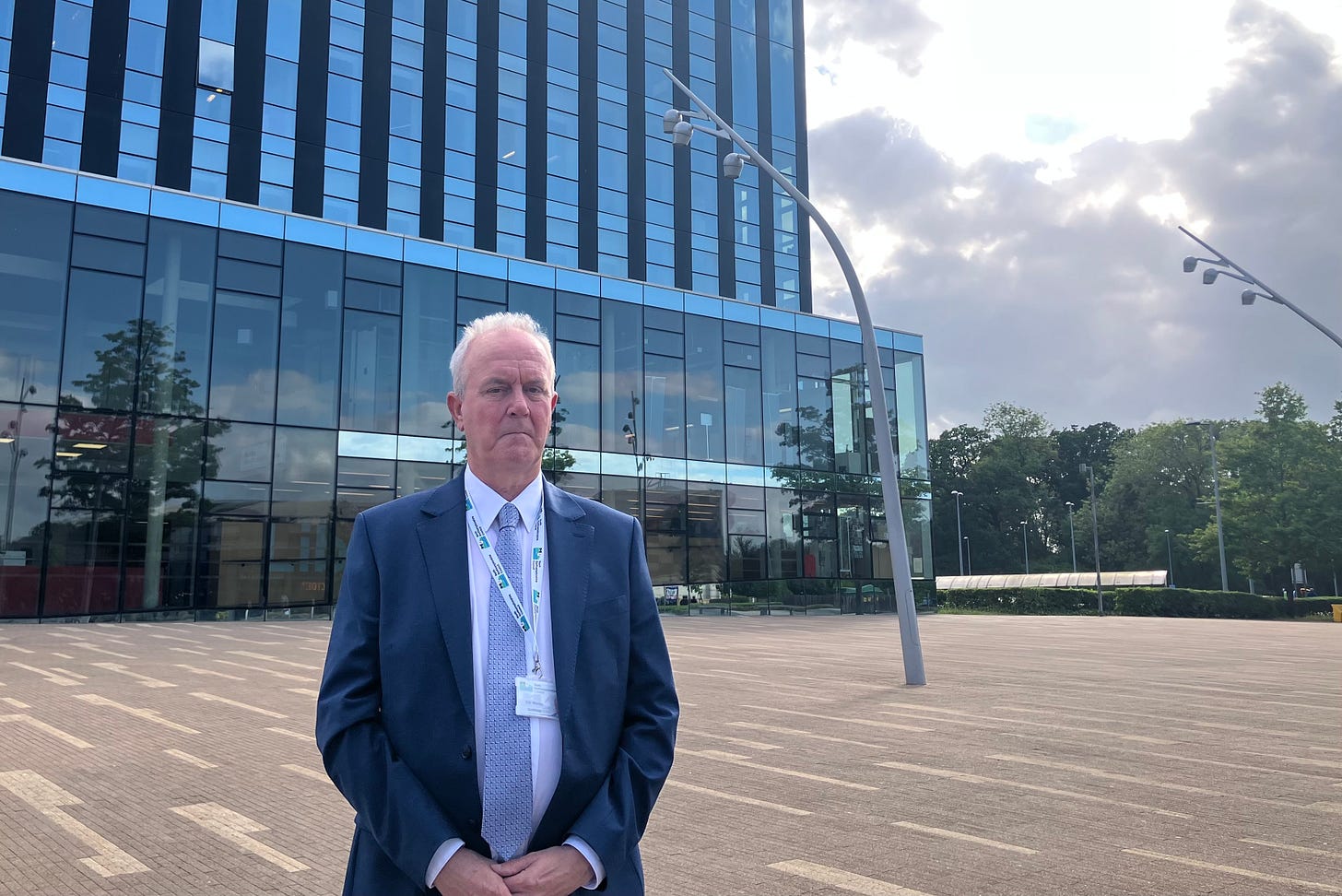Council leader says Corby’s potentially contaminated land is being reviewed and he is ‘taking duty very seriously’
Martin Griffiths has issued a statement as questions and scrutiny continues to mount
If you’re new to NN Journal sign up for our free news posts here.
By Sarah Ward

The leader of North Northamptonshire Council (NNC) has issued a statement about the council’s investigations into concerns over Corby’s toxic legacy as questions continue to grow.
This week, health secretary Wes Streeting said his department will assess the findings of NNC’s public health director who is carrying out an investigation into whether Corby has a higher rate of childhood cancers than other areas.
And now, as more questions are posed about what has happened to the toxic waste that was moved to reclaim former steelwork’s land, the Reform UK leader of NNC Martin Griffiths has issued a statement.
NNC took over the running of Corby’s affairs in 2021 as part of the local government reorganisation which saw Corby Borough Council (CBC) and other authorities in the area closed down. In 2009 CBC had lost a legal challenge which proved birth defects suffered by a number of Corby children were caused by their mother breathing in toxic waste particles while pregnant.
Since the airing of Netflix drama Toxic Town more families have come forward, wondering whether their own health issues are a result of the toxic waste clean up.
In his statement published to the council’s website yesterday, Cllr Griffiths, said:
“As council leader I fully understand the strength of feeling that has been generated by the handling of the disposal of waste from the former British Steel site in Corby in the 1990s as well as the legacy that this has created and concerns about health.
Though the waste disposal from the steel works was overseen by Corby Borough Council decades ago we recognise that today, it’s our duty to represent our residents and I take this duty very seriously.
After we were approached by a group of residents requesting information about the number of childhood cancer cases recorded for children living in Corby, we decided to carry out an important piece of work to carefully investigate relevant NHS data. This work will take time as it’s crucial that we get this right. As soon as we have the outcomes, we will share our findings initially with the residents who asked for this work to be done, and then we will share them publicly.
In terms of where contaminated waste from the steelworks was taken, based on the evidence we have viewed to date, the waste from the former steelworks site was moved to Deene Quarry, a former landfill site on the outskirts of Corby and was buried there.
This site is managed under an environmental permit held by North Northamptonshire Council and compliance is regulated by the Environment Agency – with gas and water sampling taking place on a yearly basis as part of the requirements of the permit.
People have recently raised concerns on potential areas of contaminated land where they believe waste could also have been historically disposed of.
I understand that people are worried about potentially contaminated land and want answers, particularly where land has subsequently been built upon. We will continue to review this and when this is concluded, will provide a further update.
However, it is important to highlight that where potentially contaminated land has or is going to be developed, tight rules and procedures are applied to ensure that our resident’s safety is protected.
In 2001, officers from the former Corby Borough Council carried out a comprehensive study of all sites in Corby that could be identified as potentially contaminated land, in accordance with the legislation at the time, and risk rated them to assess those which could have a negative impact on human health.
This extensive piece of work was catalogued in a Contaminated Land Strategy, which has now been superseded by the North Northamptonshire Contaminated Land Strategy. This is a publicly available document on the council’s website.
For the vast majority of development works, planning permission will be required. Any piece of land that needs a planning application – and may have had a previous potentially contaminative use - must be investigated using the national Land Contamination Risk Management procedure. This ensures that investigation and remediation work is carried out if required.
In addition, particularly for larger sites, there will be a dust management plan, included within a Construction Environmental Management Plan, that controls emissions of dust from a site.
We will continue to listen to the concerns of our residents and will consider any firm evidence that is brought forward. I will continue to have oversight and receive regular updates and when we have further information to share, we will do so.”
There have been calls for a public enquiry into what happened in Corby and how the town’s industrial past is impacting people’s health today.
The toxic waste clean up happened during the 1980s through to the late 1990s and saw industrial estates in the north of the town built on former steelworks land.
Corby was declared an Enterprise Zone in the early 1980s and scores of businesses set up on the newly created industrial estates and provided jobs for the thousands who had been left unemployed after steelmaking ended in 1980.
From the 1980s onwards the town continued to expand and new housing developments were built on former quarried areas such as Snatch Hill, Oakley Vale and more lately at Little Stanion and Priors Hall.
ITV aired a story last week about families connected to Little Stanion who have concerns about whether their child’s recent birth defects could have been caused by contaminated land.
All our stories on Corby’s toxic waste legacy can be found here.
